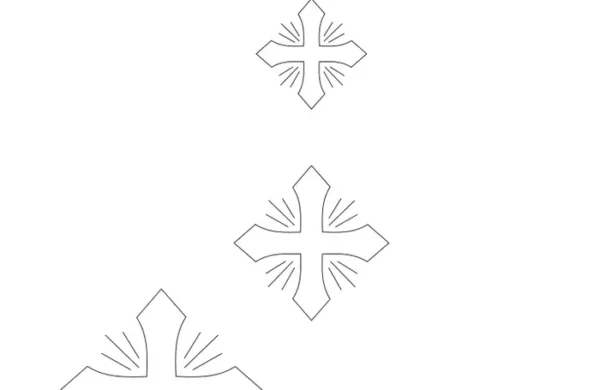
The design is a simple cross with three rays in each corner between cross bars. The Altar Linen Embroidery Design is available in 4 sizes, for purificators, lavabos, corporal a, and even the corners of a fair linen. This church linen embroidery design will use a few basic stitches such as the split stitch for an outline, and a stem stitch for the rays
Like this:
Like Loading...
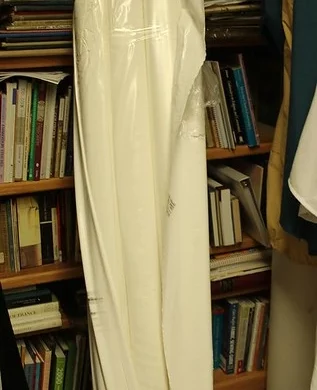
An assortment of linens has arrived, perfect for creating altar linens. From lightweight cambric for sheer veils to fine linens ideal for intricate needlework, There’s even linen suited for making traditional Albs, and a range of yarn sizes perfect for hemstitching. Also with various widths, starting from 54 inches and going up to 120 inches.
Like this:
Like Loading...

This little book (founded on a series of articles on Church Embroidery written for the ‘Treasury’) is intended for the use of those who are desirous of learning by practical experiment how to make the best use of such time and skill as they have at their command; and who, while they are unable to go through the long courses of instruction which are generally indispensable to the attainment of perfection are yet anxious to devote their ‘labour of love’ to the service of the Church. – Hinda Hands (Hands, 1907, p. 1)
Like this:
Like Loading...

Handmade booklet with tracings and designs for hand embroidery on church linens. It includes a cross-with-crowns pattern and larger sheets with iron-on transfers for clear designs. The book also has traced hand embroidery designs and possible pricing info for different linen sizes.
Like this:
Like Loading...

Fleur Cross Liturgical Embroidery Design
Like this:
Like Loading...
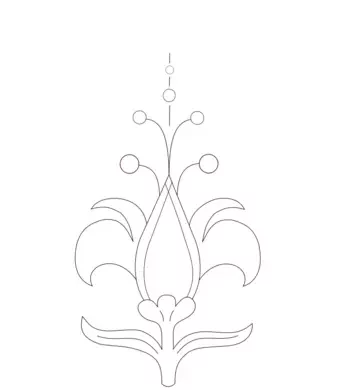
Creating new hand embroidery designs for Church Vestments and church linens.
– The Fleur de lis which symbolizes purity and often represents the Trinity. The Virgin Mary and the angel Gabrielle are also represented by the Fleur de lis. This particular design is also reminiscent of the pomegranate.
Like this:
Like Loading...
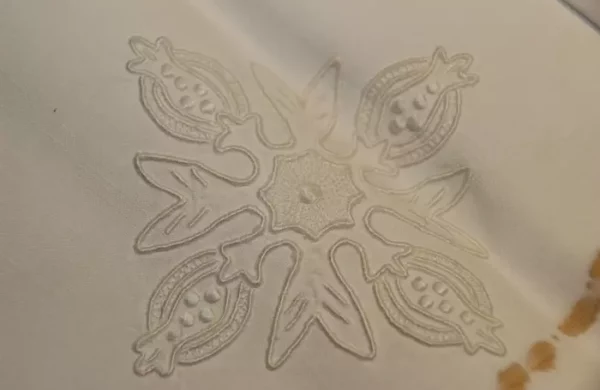
New altar linen project, a quick peek at some photos of whitework embroidery on linens.
Like this:
Like Loading...
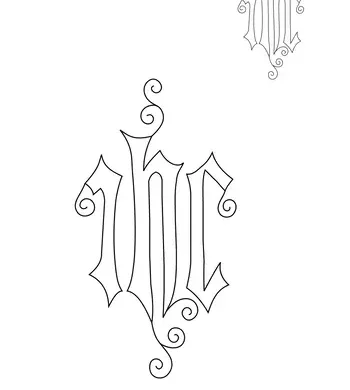
This vintage Ecclesiastical Hand Embroidery Design, originating from a Boston monastery over 100 years ago, still bears the pounce powder from its original use. The intricately perforated design on thin tracing vellum paper is tiny—merely 2 to 3 inches in size. The IHC hand embroidery is elegantly simple and clean, sparking ideas for stitching options. Considerations include a trailing stitch for the outline with a seed stitch filling or even a straightforward split stitch outline.
Like this:
Like Loading...
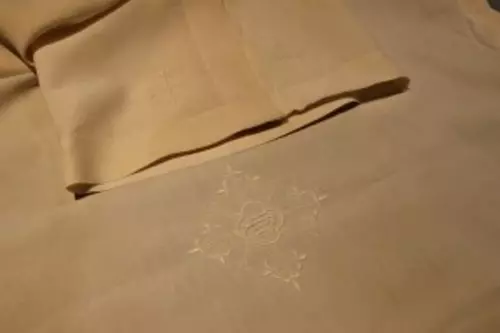
This antique Fair Linen, while stained, and scorched, with holes from a too-hot iron on one end, features a lovely hand-embroidered IHC motif in the center of the Altar Linen, surrounded by four smaller cross designs for the corners. Worked completely in white threads, the Ecclesiastical Embroidery is still lovely amid the linen stains of age. The central hand embroidery design is relatively small, considering the Fair Linen is wide and long
Like this:
Like Loading...

This trim features a zig-zag design filled with star-shaped motifs. Notably, it has triangular peaks at the upper edge where it attaches to the Altar Linen. An interesting detail is the deep hem of the linen, matching the trim’s depth—around 5 to 6 inches. While this may seem unusual to modern eyes, older reference books mention long Fair Linens having deep hems, especially if they reach close to the floor. The added weight from a deep hem likely contributes to the Fair Linen hanging well.
Like this:
Like Loading...
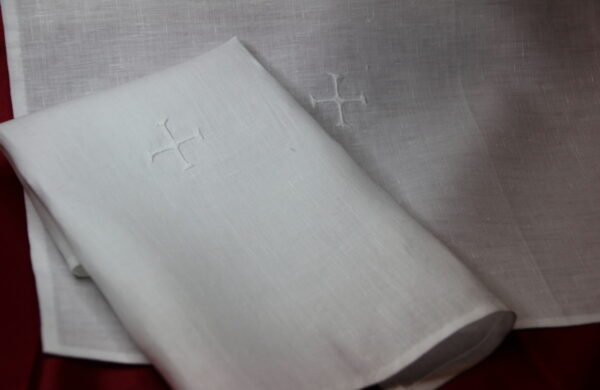
The altar linen project for King Richard III was spearheaded by Elizabeth Morgan who was contacted by Leicester Cathedral and coordinated the making of Fairlinens: palls, purificators, lavabo, corporals, and other linen items as needed for a new altar being installed in Leicester Cathedral for the service.
Like this:
Like Loading...

Merge three vintage Ecclesiastical Embroidery Designs into a versatile artwork. The simple lines make it ideal for whitework, but it seamlessly transitions for gold and silk Ecclesiastical Embroidery. For whitework, consider stitches like stem stitch, outline stitch, and padded satin stitch for letters. Alternatively, use outline stitch with seed stitch fill. Chainstitch is another excellent choice for whitework in Ecclesiastical Embroidery.
Like this:
Like Loading...

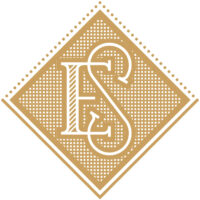











You must be logged in to post a comment.